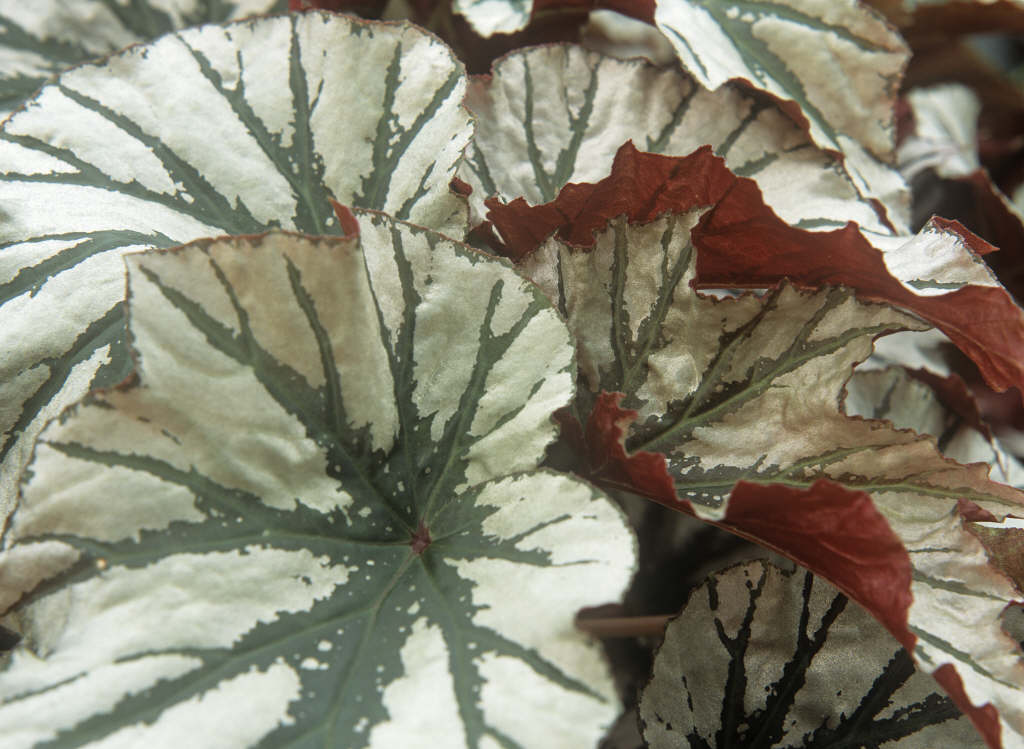Begonia rex (R)
king begonia
A rhizomatous tender, evergreen perennial to 30cm, with large, obliquely ovate leaves which are metallic green with a silvery zone on the upper surface, reddish beneath; panicles of small pink flowers in winter

Buy this plant
Size
Ultimate height
0.1–0.5 metresTime to ultimate height
2–5 yearsUltimate spread
0.1–0.5 metresGrowing conditions
Moisture
Well–drainedpH
Acid, Alkaline, NeutralColour & scent
| Stem | Flower | Foliage | Fruit | |
| Spring | Green Grey Silver Red | |||
|---|---|---|---|---|
| Summer | Green Grey Silver Red | |||
| Autumn | Green Grey Silver Red | |||
| Winter | Pink | Green Grey Silver Red |
Position
- Partial shade
Aspect
South–facing or West–facing or East–facing
Exposure
Sheltered Hardiness
H1BBotanical details
- Family
- Begoniaceae
- Native to GB / Ireland
- No
- Foliage
- Evergreen
- Habit
- Clump forming
- Potentially harmful
- Ornamental bulbs - not to be eaten. Wear gloves and other protective equipment when handling. Pets: Ornamental bulbs - not to be eaten - see the HTA guide to potentially harmful plants for further information and useful contact numbers
- Genus
Begonia can be annuals, evergreen or deciduous perennials or shrubs, with fibrous, tuberous or rhizomatous roots and usually asymmetrical leaves, often strikingly patterned, and small or large flowers, both male and female in the same cluster
- Name status
Correct
- Horticultural Group
- Rex begonias are evergreen, rhizomatous perennials grown for their handsome, brightly coloured leaves, rather than the small pale pink or white flowers which may appear in spring, summer or autumn
- Plant range
- Assam
How to grow
Cultivation
Grow under glass or in frost-free enviroment. Mainly grown for foliage. See Begonias: houseplants for further advice.
Propagation
Propagate by seed, leaf cuttings or sections of rhizome
Suggested planting locations and garden types
- Houseplants
- Patio and container plants
- Sub-tropical
Pruning
No pruning required
Pests
May be susceptible to caterpillars, mealybugs, tarsonemid mite, thrips, vine weevil and aphids
Diseases
May be susceptible to grey moulds, powdery mildews, stem rot and rhizome rot
Love gardening
Sign up to receive regular gardening tips, inspiration, offers and more
View our Privacy Policy
Get involved
The Royal Horticultural Society is the UK’s leading gardening charity. We aim to enrich everyone’s life through plants, and make the UK a greener and more beautiful place.